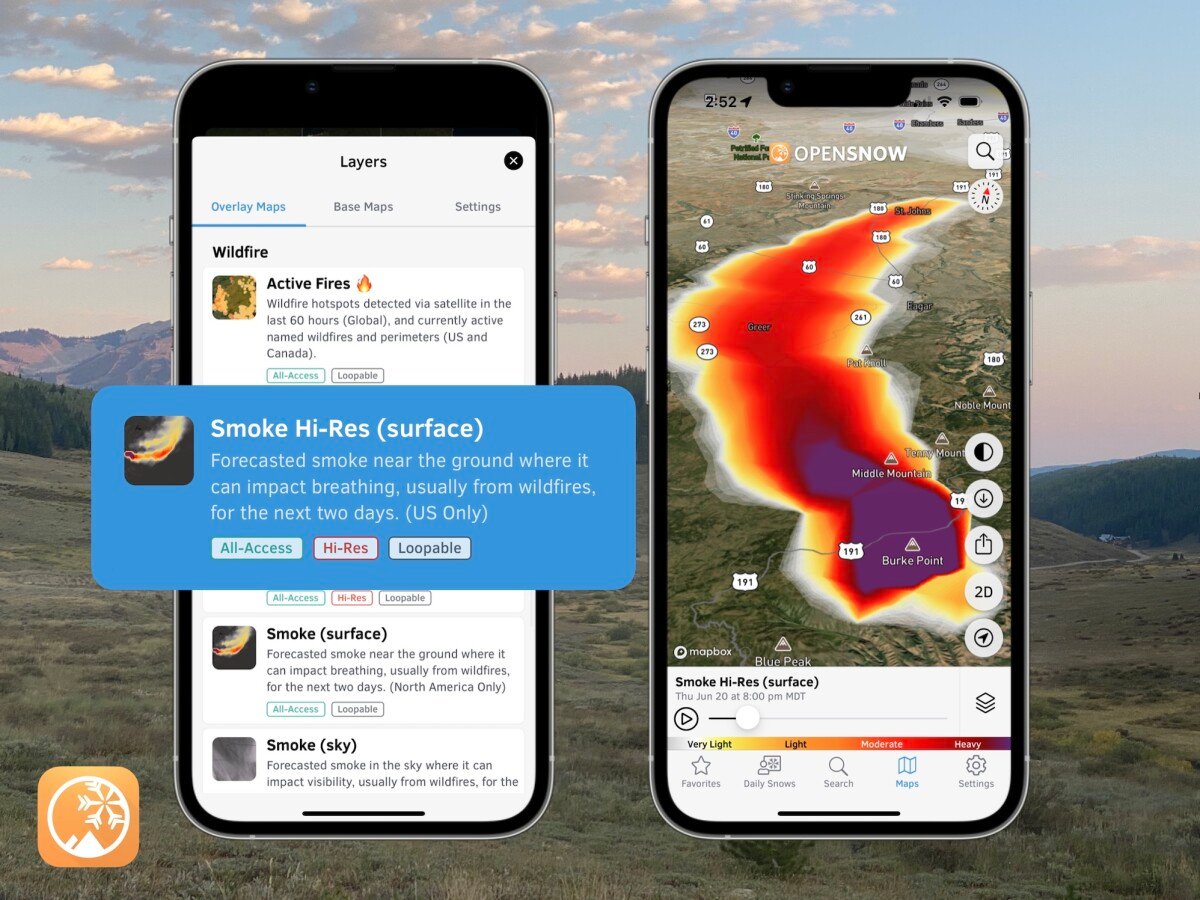US & Canada Daily Snow

By Zach Butler, Meteorologist Posted 3 months ago March 31, 2025
Snow in the West, Warm in the East
Summary
An active week of weather will start with an atmospheric river bringing heavy snow to the Sierra and good powder into the Central Rockies. The Northwest will see light snow as well. A storm will become semi-stationary in the West at the end of the week with more snow in the Rockies through the Southwest. In the East, active storms will track north with snow to the north and rain to the south.
Short Term Forecast
Helpful Links:
7-Day Snow Forecast:
This week will start with a round of storms that will feature an atmospheric river (AR) in California. This AR will bring heavy snow to the Sierra that will extend powder into the Central Rockies. By the mid to later parts of this week, a storm system will move into the Central Rockies, bringing more powder, which will reach areas of the Southwest as well.
More details from our local experts...

In the East, the active storm track will continue to lift north and bring snow to the northern Great Lakes, northern New England, and southern Canada. Several areas along the U.S.-Canada border will see rain and mixed precipitation along the active storm track, which will bring soggy conditions.
More details from our local experts:

Forecast for Mon (Mar 31) to Tue (Apr 1):
A major atmospheric river (AR) will impact California and bring heavy snow (2-4 feet) as we transition from March to April. This AR will extend moisture into the Central Rockies, bringing great powder conditions to Utah and Colorado. The northern side of the storm and AR will bring light snow to the Northwest.
A storm in the East will lift north and bring rain on Monday, with clearing and colder conditions on Tuesday. This storm will bring snow to the far northern areas of Ontario and Quebec.

Forecast for Wed (Apr 2) to Thu (Apr 3):
The storm in the West will move inland and continue to bring snow through the Sierra and Central Rockies. This storm will pull down cold air from the north and bring light snow into the Southwest. Locally heavy amounts of snow are likely in Colorado. The Northwest and especially Montana will see additional moisture from northerly flow.
In the East, active storms will continue to track north and keep cold air on the north side. This will bring snow to the Upper Midwest and southern Canada, with mixed precipitation and rain south of the U.S.-Canada border.

Forecast for Fri (Apr 4) to Sat (Apr 5):
The storm in the Central Rockies will become a cutoff low and remain semi-stationary. This will bring cold conditions and snow through the Rockies and into the Southwest. Heavy amounts of snow are increasingly likely in Colorado and New Mexico.
In the East, warm southerly flow will transport high amounts of moisture from the South-Central Plains into the Mid-Atlantic. Locally heavy amounts of rain and thunderstorms are likely.

Extended Forecast
Outlook for Sun (Apr 6) to Fri (Apr 11):
The weather pattern will change in the extended forecast. An upper-level ridge with an associated high-pressure system will move into the Western U.S., bringing spring conditions back to many locations.
The cutoff low in the Central Rockies will dissipate as an upper-level trough and cold air dip from Eastern Canada into the Eastern US. This will bring favorable conditions for late-season snow to many locations in the Midwest, New England, and potentially the northern Mid-Atlantic.
The intensity of the ridge in the West (with warm and dry air) and trough in the East (storms and cold air) is uncertain, which will affect potential snow accumulations.

Thanks so much for reading and have a great start to the week! Next update on Wednesday (April 2).
Zach Butler
Announcements
NEW: Forecast Range Graphs

You can now view individual forecasts from global and regional high-resolution weather models in OpenSnow. This includes forecasts from the GFS, ECMWF, HRRR, and ICON models, as well as the OpenSnow blend.
The graphs give you a behind-the-scenes look at the forecast and make it easier to see if the forecast models are in tight agreement or if there is a wide range of potential outcomes over the next 10 days.
Note: This is currently only available in the OpenSnow iOS app and website (OpenSnow.com). Android will be available soon.
Getting Started
- Go to any location screen.
- Scroll down under "Weather" or "Snow Summary".
- Tap "View Interactive Chart" in the app.
- Adjust the model, timeframe, or data view.

Why is the Forecast Range helpful?
Understand if there is high or low confidence in the forecast. If all models show a similar forecast, there is higher confidence in the forecast, and vice versa.
Dig into the details. If you have experience looking at weather model data and trust certain models or higher-resolution models, you'll be able to isolate your favorite data.
View → Forecast Range Graphs
About Our Forecaster




